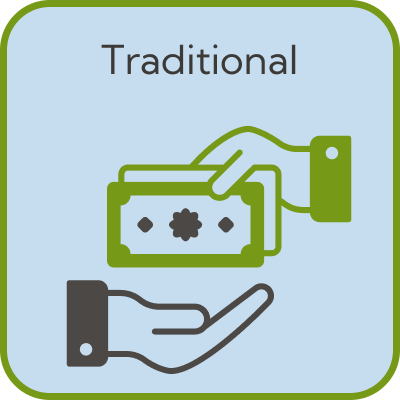Fundraise by participating in Self-organised solo scavenger hunt!
Self-organised solo scavenger hunt
Imagine embarking on a self-organized solo scavenger hunt—a fun and engaging way for you to raise funds for your chosen charity. In this adventure, you create a list of items and tasks that you need to find or accomplish within a specific area or your community. You could tailor your scavenger hunt to include visiting historical landmarks, finding specific types of objects, or completing acts of kindness. The flexibility of this event allows you to personalize your journey, making it as challenging or as leisurely as you prefer.
A self-organized solo scavenger hunt is an excellent idea for charitable fundraising because it combines excitement with purpose. It not only lets you engage with your surroundings in a meaningful way but also allows you to share your experience with donors and supporters through live updates, photos, and stories. This event is inherently shareable on social media, which can help increase the visibility of your cause and encourage more people to contribute to your fundraising efforts.
To organize your solo scavenger hunt, start by deciding on a theme and location that aligns with your interests and the mission of the charity you are supporting. Create a clear, achievable list of items and tasks that reflect your theme. Plan your route and check accessibility and permissions if required. It's important to consider your safety, especially since this is a solo event, so let friends or family members know your plan and check in regularly.
For fundraising, you can use several of Sponsivity's challenge types to maximize your donations. The Time Challenge model can be particularly effective; you can set a goal to complete your scavenger hunt within a certain timeframe, and sponsors could donate more if you beat the target time. Alternatively, the Wager Challenge model suits this activity well—set a fundraising threshold to kick off your hunt or to undertake a particularly daunting task on your list. This can significantly boost donor interest and participation as they are motivated to see you succeed in the more challenging aspects of your hunt.
Another compelling option is the Challenge Chain model, where you complete your scavenger hunt and then challenge a friend or another fundraiser to do the same. Each nomination could trigger a donation, spreading the fun and multiplying the fundraising impact. By choosing a suitable challenge type and planning diligently, your solo scavenger hunt can become a memorable and effective fundraising event.

Sponsivity offers you several ways to raise for Self-organised solo scavenger hunt


🧠 Mental Challenge – Pushing Limits for a Good Cause
Mental challenges test focus, resilience, and determination, making them a unique and engaging way to fundraise. These challenges often involve problem-solving, endurance under pressure, or personal restrictions, such as memory feats, puzzle marathons, or digital detoxes. Fundraising through mental challenges allows participants to showcase their mental strength and discipline, inspiring supporters to donate.
Why Mental Challenges Work for Fundraising:
- Highly Inclusive: Unlike physical challenges, mental challenges can be attempted by anyone, regardless of fitness level.
- Great for Social Engagement: Challenges like chess marathons, escape room events, or language-learning goals are easy to share and track online.
- Endurance & Dedication: Tasks that test patience and willpower—like 24-hour challenges—demonstrate commitment, motivating donors to give.
- Unique & Entertaining: Creative challenges stand out, making them highly shareable on social media and drawing attention to the cause.
Examples of Mental Challenge-Based Fundraisers:
- Memory Challenge: “I’m memorizing 500 digits of Pi—sponsor me to support dementia research!”
- Endurance Puzzle Challenge: “Help me complete 10,000 Sudoku puzzles in a month for charity!”
- No-Talking or Digital Detox Challenge: “Support my 48-hour silent retreat—every donation helps my cause!”
Mental challenges showcase creativity, discipline, and perseverance, making them a fun and inspiring way to raise money while pushing personal limits.
Set bespoke rewards that suit mental challenge
- Join me in my challenge for 1 day
- Get defeated by me at chess online during the challenge
🧭 Exploration – Fundraising Through Adventure & Discovery
Exploration-based challenges take fundraisers on exciting journeys, whether it’s trekking through remote landscapes, discovering hidden landmarks, or completing a multi-day expedition. These challenges combine adventure, endurance, and curiosity, making them highly engaging for both participants and supporters.
Why Exploration Works for Fundraising:
- Inspires Donations: The sense of adventure and discovery makes exploration challenges compelling and shareable, encouraging more sponsorship.
- Scalable & Flexible: Challenges can range from urban scavenger hunts to long-distance expeditions, making them accessible to all levels.
- Great for Personal & Team Fundraising: Exploratory challenges can be done solo or as part of a group, allowing for corporate team-building fundraisers or solo endurance treks.
- Social Media Appeal: Stunning landscapes, cultural discoveries, and progress updates make for excellent engagement and storytelling.
Examples of Exploration-Based Fundraisers:
- Long-Distance Trek: “I’m hiking across the Scottish Highlands to raise £1,000 for conservation efforts!”
- City Scavenger Hunt: “Join me as I explore 50 historic landmarks in 24 hours for charity!”
- Multi-Day Expedition: “I’m taking on a 10-day solo trek through Patagonia—every donation supports my cause!”
Exploration fundraisers combine adventure with purpose, turning exciting journeys into powerful fundraising campaigns that captivate donors and make a real impact.
Set bespoke rewards that suit exploration
- Create a short storytelling video of the journey
- Pose for a selfie at landmark X
📅 Self-Organised – Fundraising on Your Terms
Self-organised fundraising challenges put you in control, allowing fundraisers to create a challenge that’s unique, personal, and tailored to their passions. Unlike organised events, self-organised challenges offer complete flexibility—whether it’s a solo endurance test, a creative personal challenge, or a community-driven activity.
Why Self-Organised Challenges Work for Fundraising:
- Full Flexibility: Choose the activity, location, and timing that works best for you, making fundraising accessible and achievable.
- Personal & Meaningful: Custom challenges allow fundraisers to connect with their audience by choosing something significant to them.
- Low-Cost & Inclusive: Without the need for event entry fees or logistics, anyone can participate, making it easy to involve family, friends, or colleagues.
- Perfect for Challenge Chain & Wager Models: Self-organised challenges can inspire others to join in, spreading the impact through viral nominations.
Examples of Self-Organised Fundraisers:
- Personal Running Challenge: “I’ll run 5K every day for a month—support my journey!”
- DIY Fitness Marathon: “I’m doing 1,000 push-ups in a day—every donation pushes me further!”
- Creative Challenge: “I’ll cycle across the country dressed as a superhero—help me hit my fundraising goal!”
Self-organised challenges allow fundraisers to turn their creativity, passions, and dedication into real impact, making it a powerful and accessible way to raise money for a cause.
Set bespoke rewards that suit self-organised event
- Rename the challenge in your honour
- Bring home-baked cookies to the finishline